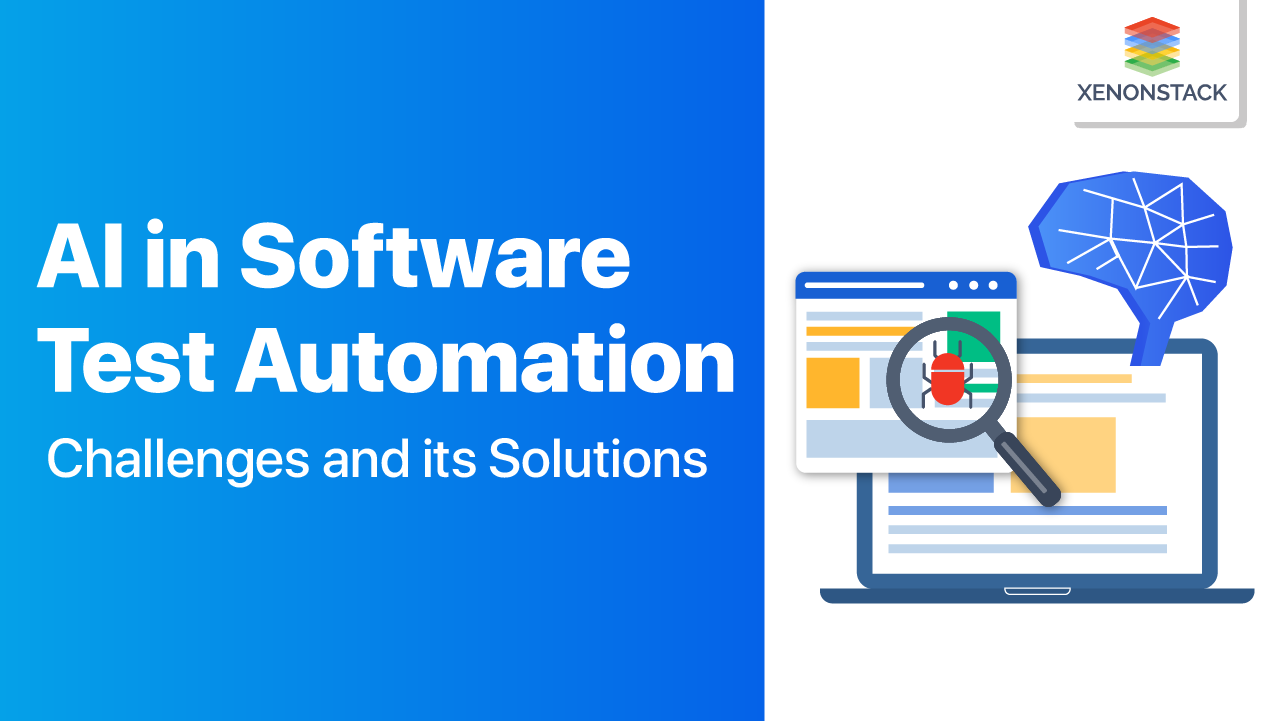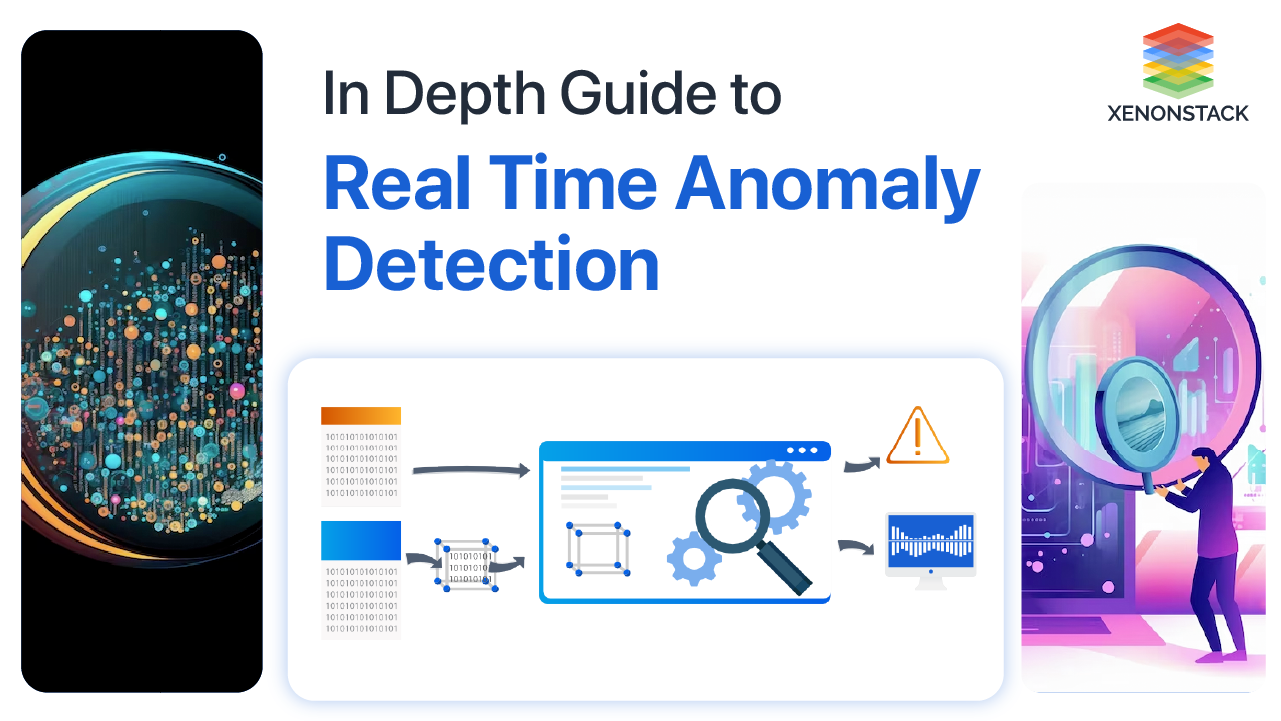
Introduction to AI in Software Testing
It is an important process that ensures customer satisfaction in the application. It is the planned way in test automation where an application observed under specific conditions where the testers understand the threshold and the risks involved in the software implementation.
AI in Software Testing helps to safeguard and an application against potential application fail-overs which may turn out being harmful to the application and the organization later on. As more and more Artificial Intelligence comes into our lives, the need for testing with it is increasing. Taking the self-driving cars as an example: if the car’s intelligence does not work properly and it makes a wrong decision, or the response time is slow, it could easily result in a car crash and puts human life in danger.
Automation testing is responsible for completing repetitive tasks with better accuracy and less time span. Taken From Article, Testing Automation Tools and Latest Trends
How AI is changing the dynamics of AI in Test Automation?
In an attempt to make the application safeguard, we are turning increasingly towards Artificial Intelligence. As testing progressively moving towards greater automation, we may be turning over most of it to AI. This implies that instead of manual testing done by humans, we are slowly moving towards a scenario where machines will take over the execution of test codes. With minimal human input, however, will be required to help machines ‘learn’ and enhance themselves.
It has, therefore, become essential to create an association directly pursuing the Grand Dream of Testing, where all the things are genuinely automated without human intervention and systems convey better testing over current application test teams. Make this thought a step further and imagine a world where software can test, diagnose, and heal itself.
Artificial Intelligence is making machines capable of performing quick tasks like human beings. Taken From Article, AI Overview and Applications
What are the benefits of AI in Test Automation?
The the significant advantages of it are listed below:
Finding the right set of people
Businesses may overcome the difficulty of finding a suitable team and skill set by
leveraging AI-based test automation technologies that give testers with a semi- or
completely scriptless scripting environment.
The amount of time spent on repeated Jobs
Every time a new test automation project arises, regardless of how reusable the components are, teams wind up creating a lot of comparable code again, which takes a long time.
AI may be used to swiftly and automatically develop test scripts. AI tools may be taught based on past project inputs and results to automatically generate test scripts for comparable projects.
Flaky Test
Teams of testers spend hours assessing whether a failed test was caused by application bugs or poorly prepared test cases. These kinds of test failures are known as flaky tests, and they cause a release to be held up needlessly, resulting in software delivery delays.
AI can assist teams in overcoming the difficulty of flaky tests by developing more resilient test cases and detecting trends in random test failures to accelerate the process.
UI changes necessitate frequent script modifications
Businesses frequently adjust the app User Interface to deliver a consistent User Experience (UX)/(UI). Even if the change is modest or invisible, it may cause the test scripts to fail while executing various operations on the page.
AI and ML algorithm-based technologies may be trained to detect tiny changes in code or application issues. These technologies can then take appropriate steps, reducing the need for human intervention in script updates for such modest modifications.
Maintaining the test suites and test scripts
Maintaining a large number of test scripts gets difficult as an application grows. AI tools may be used to maintain and extract the appropriate test scripts based on testing needs, allowing AI to be utilized to tackle this difficulty. As a result, AI is supposed to assist overcome the problems of traditional test automation and usher in a revolution in test automation.
The quality assurance and software testing process of software development is as necessary as the actual code had written.. Click to explore about, Software Testing Best Practices
Beyond Continuous Testing with AI
Suddenly, a massive number of people jumped straight into a digital world, creating a tremendous demand for more, and increasingly innovative software. A little while ago, most companies were releasing software annually, bi-annually, or quarterly. Now, iterations commonly last two weeks or less. So, we adopted Agile and DevOps to move beyond that acceleration plateau. Today, many of the organizations are talking about Continuous Testing and trying to implement it. The approach to Continuous Testing is to ensure the best user experience is delivered, free of defects and involves a process to test early and test often. We have turned to Continuous Testing to bridge the gap that we are facing today. But how do we check when, over time, these trends continue, and the gap widens? We will necessarily need to go beyond Continuous Testing.
Nevertheless, when we look into the future, it is clear that even Continuous Testing will not be sufficient. We will need additional support to be able to achieve a positive user experience with high-performance speeds and technical complexity. That’s where AI and Machine Learning enter the competition. They can, and will, take over the complicated phases of software development and testing. It is perfectly able to advance it by automating tasks that involve self-learning, and which traditionally required human cognition.
Today, the huge majority of companies are talking about Continuous Testing and also trying to implement it. We need “Digital Testing” to obtain further expedition and meet the quality requirements of a future driven by Internet of Things, robotics, and quantum computing. AI follow intelligent human behavior for machine learning, and predictive analytics can help us get there.
Why do we need AI in Test Automation?
It is a procedure that constitutes a very fundamental aspect in the area of development. However, many time developers can't do exhaustive testing (test approach in which all possible data combinations are used for testing) of an application because of the lack of resources and time.
- We need a requirement for a system that could intelligently recognize regions that will be elaborated and more focused on the aspects that could be taken through automation based on repetitive patterns.
- It takes up the most amount of time, human resource, and capital. And with the developers seeking faster deployments with inadequate infrastructure, it is a suitable path forward.
- Since 80% of testing is only a repetition of the checks that the software already possess, it will be helpful to automate the processes in an efficient way instead of a human tester which unnecessarily inflates costs and effort.
- It would be a good practice if human intelligence as well as automation through AI to recognize the application issues by making exceptional and innovative test environments.
- It is ideal to leave the repetitive work to the Artificial Intelligence-powered automation which leaves just 20% of the testing operations to human creativity and reasoning ability.
- AI algorithms can be tremendously helpful in the testing industry in making a smarter and more productive software for the end-user. It is, however, essential to interpret how to use it brilliantly.
- Algorithms that operate like a genuine user accessing automation. From that point onward, one must identify the areas within the process that can be optimized with it and apply the Machine learning and deep learning algorithm.
- Having a smart algorithm can encourage the process, help testers to find the maximum number of bugs in less time and it will make the application more reliable and accurate. The outcomes after that can be used by the developers to refine the product and learn from trial and error.
System testing of software or hardware conducted on an entire, integrated system to assess the system's compliance with its specified requirements.Taken From Article, System Testing Types, Best Practices and Tools
What are the benefits of integrating it?
The benefits of integrating it are mentioned below:
Improved Accuracy
Even the most experienced tester is bound to commit mistakes while doing repetitive manual. This is where software automated testing helps by performing the same or repetitive steps correctly every time they are performed and never miss out on recording accurate results. The testers freed from repetitive manual tests have more time to create new automated software tests and deal with sophisticated features.Going beyond the limitations of Manual Testing
It is almost impossible for the most significant software/QA departments to execute a controlled web application test with 1000+ users. With the automation testing, one can simulate tens, hundreds or thousands of virtual system of users that can combine with a network, software or web-based applications.Helps both Developers and Testers
Shared automated tests can be used by the developers to catch problems quickly before sending to the QA team. Tests can be run automatically whenever the source code changes, checked in and notified the team or the developer if they fail. Features like these increase the confidence of developers and also save their time.Increase in overall Test Coverage
With automated, one can increase the overall depth and scope of tests resulting in an overall improvement of software quality. It can look into the memory and file contents, internal program states and data tables to determine whether the software is performing on as it is required to. All in all, software test automation can be executed 1000+ different test cases in each test run and provide test coverage that is impossible with manual software tests.Saved Time + Money = Faster time to Market
With software tests being repeated each time source code is changed, manually happening those tests can be not only time-consuming but also expensive. Interestingly, once created – automated tests can be executed over and over, with zero additional cost at a much quicker pace. Its time span can be decreased from days to mere hours which translates directly into cost savings.
Combining the strength of Artificial Intelligence in cyber security with the skills of security professionals from vulnerability checks to defense becomes very effective.Taken From Article, AI in Cyber Security
What are the various methods for AI-Based Software Test Automation?
The various methods for AI-Based Software Test Automation are listed below:
Regression Suite Automation
Regression testing takes a lot of time and effort from the tester. Regression suite automation with AI conducts automated tests intelligently depending on changes in the code each time. The main goal of this test is to decrease the time it takes to run a regression test cycle by finding and running the proper collection of test cases.
Defect Analysis and Prediction
It entails the application of machine learning and natural language processing methods to aid in the accurate detection of software flaws. The major goal of this test is to assure early fault detection and assist firms in getting to market faster.
Self-healing Automation
Automatic healing of test automation script breakages that may arise from an object or other property changes is part of the AI-enabled self-healing process. The primary goal of this test is to guarantee that less manual intervention is required and that the self-healing process is accelerated.
Manual Software Testing VS AI Software Testing
Let us examine the advantages of Artificial intelligence testing in answer to the shortcomings of manual testing. Manual software testing often relies on the tester role-playing as the end user to ensure correct application behavior. On the other hand, an way to testing is based on the solutions for the specific problems that are inherent to manual testing and thrives on change.| Manual Testing | Artificial Intelligence Testing |
|---|---|
| Manual Testing is time-consuming and expensive. | Artificial Intelligence saved time + Money = Faster delivery to Market. |
| Manual testing requires the presence of the software tester. | Testing using it can be done steadily without much human intervention. |
| In Manual Testing, there will be low productivity. | With the help of it automated tools in software testing, there will be high productivity. |
| Manual testing is not always 100% accurate as it can be exposed to certain errors. Even the most experienced software testers are bound to make mistakes. | Here artificial intelligence tools help by performing the same test steps accurately each time they are executed and at the same time provides detailed results and feedbacks. |
| Some glitches in the software are usually not recognized by the software tester. | It testing tools can help to increase the scope of tests that result in an overall improvement of software quality. Increases the Overall test coverage. |
| Manual testing is a linear process and happens sequential manner and its difficult to write hundreds of test cases and execute them manually. | AI bots can understand the client’s requirement properly and can produce the code for hundreds of test cases much more quickly than a human tester. |
What are the top 5 AI Tools for Automation Testing?
Top 5 Popular AI-powered tools for test automation are listed below:
UI Path Test suite
UiPath Test Suite combines the world's top RPA technology with best-in-class testing capabilities to expedite scaling through proactive testing, cross-enterprise cooperation, and a uniform approach to creating and deploying automation. UiPath Test Suite helps automation practitioners and stakeholders who rely on automation, such as transformational leaders, business users, customers, and partners. The UiPath Test Suite includes Test Manager, Studio Pro, Orchestrator, Robots, and other Test Studio Components. Furthermore, it promotes cooperation through reusable artifacts and features an easy-to-use interface.
Sofy.AI
It is a no-code, AI-powered quality automation tool that uses AI to test mobile apps on a number of Android and iOS devices. It may be used for manual, automatic, and RPA app testing. This no-code testing platform is unique in that it simplifies testing, reduces testing time, boosts productivity, and shortens the testing life cycle. This intelligent automation testing solution significantly simplifies manual, automatic, and robotic testing.
Tricentis Tosca
It is an enterprise solution used for software application end-to-end automated testing. This solution has incredible capabilities such as Vision AI, model-based test automation, risk-based test optimization, and so on. This tool's Vision AI feature uses the power of AI to automate and customize testing. It delivers reliable, self-healing, platform-agnostic UI automation by combining deep convolutional neural networks with smart heuristics. In conjunction with Tricentis Tosca, Vision AI can be used to automate even the most difficult-to-access UI systems.
Functionize
It is a cloud-based automated testing solution for functional and non-functional testing (load and performance testing). This tool accelerates test generation and management by utilizing AI and ML techniques. This AI tool employs plain English and NLP to generate a functioning test. Furthermore, this application can run hundreds of tests from all desktop and mobile browsers in a single minute.
Parasoft
It is an automated testing tool that may be used to automate tests at any level of the software development cycle, from code analysis through user interface testing. It is a test suite with several components, and it has recently integrated AI and ML into software test automation to assist enterprises in implementing static analysis. The AI solution from Parasoft may be used to discover faults early and assure compliance with a wide range of functional safety, security, and coding requirements. It lightens the load on teams and guarantees that critical design concerns are addressed first.
Conclusion
We are fast approaching in a time when even “Continuous Testing” will be unable to keep pace with the shrinking delivery cycle times, increasing technical complexity, and accelerating rates of change. We are already starting to use basic forms of AI, but we need to continue the testing evolution to achieve the efficiency required for testing of robotics, Internet of Things, and so forth. We need to learn how to work smarter, not harder - ensuring the quality in an era where software will be processing an unimaginable no. of data points in real time, like on the IoT and while literally driving “self-driving” cars. To know more about the Best practices for Enabling Software Testing we recommend taking the following steps -
- Get an Insight about Software as a Service Testing Tools
- Contact Us for Artificial Intelligence Services and Solutions


